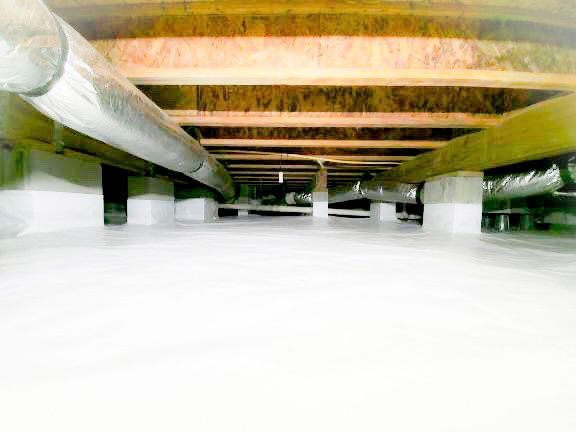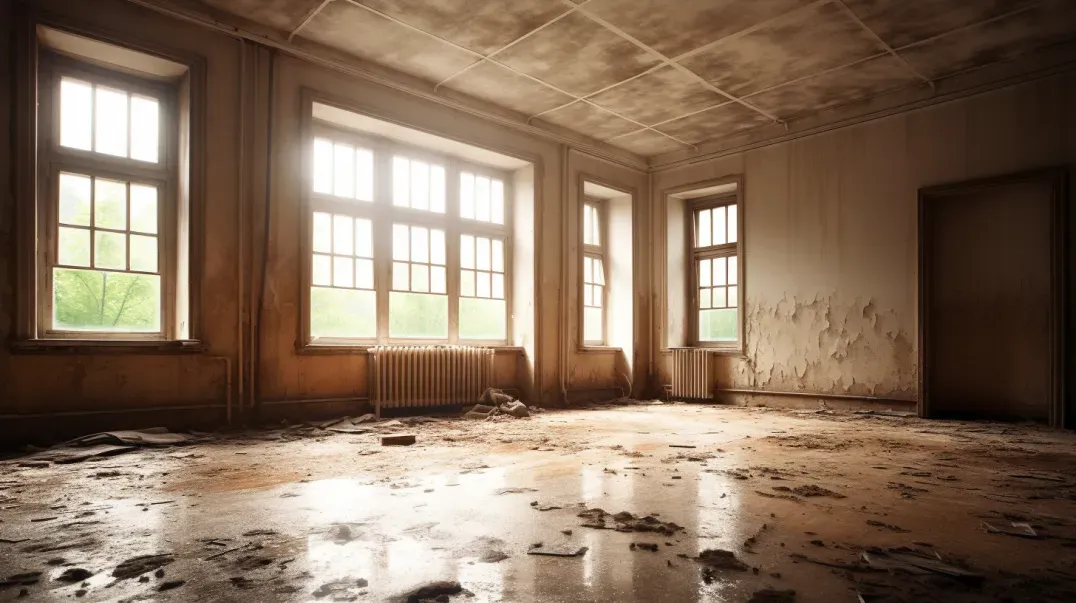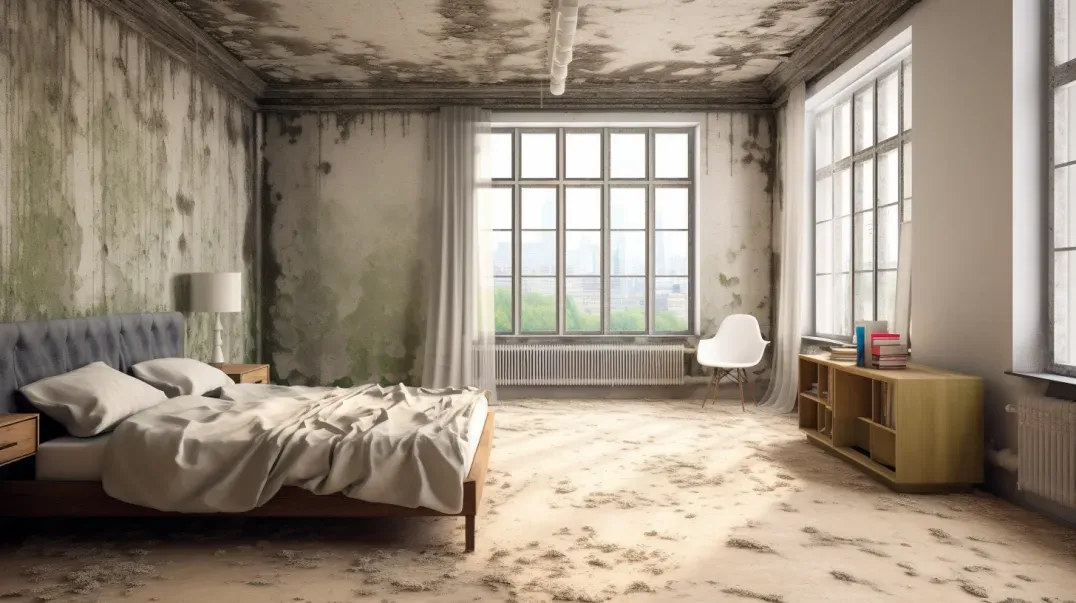Health Symptoms of Crawl Space Mold
Welcome to our comprehensive guide on mold growth in crawl spaces, a hidden yet significant concern for homeowners and residents alike. Mold, a common yet often overlooked issue, thrives in the damp, dark environments of crawl spaces, posing not just a threat to the structural integrity of homes but also to the health of those living above. This blog aims to shed light on the critical aspects of mold growth in these under-discussed areas and its potential impact on health.
In this introduction, we delve into the reasons why crawl spaces become ideal breeding grounds for mold. We'll explore the conditions that foster mold growth, such as moisture intrusion, inadequate ventilation, and the presence of organic materials. Understanding these factors is crucial in both preventing and addressing mold infestations effectively.
Moreover, we emphasize the importance of recognizing health symptoms related to mold exposure. Mold spores, when inhaled, can trigger a range of health issues, from mild allergic reactions to more severe respiratory problems. It's essential for individuals to be aware of these symptoms, especially in homes with known or suspected mold issues. Early detection and intervention can prevent long-term health complications and improve the living environment significantly.
Join us as we navigate through the complexities of mold in crawl spaces, offering insights, prevention tips, and solutions. Our goal is to empower you with knowledge and practical advice, ensuring your home remains a safe and healthy haven.
What is Crawl Space Mold?
Crawl space mold is a type of fungal growth that occurs in the crawl spaces of homes and buildings. These areas, often out of sight, provide a conducive environment for mold due to their typical characteristics – dampness, limited airflow, and often, a lack of direct sunlight. Understanding what crawl space mold is and recognizing its presence are crucial steps in maintaining a healthy living environment and ensuring the structural integrity of your property.
Characteristics of Crawl Space Mold
Types of Mold Commonly Found in Crawl Spaces
Crawl spaces can harbor various types of mold, each with unique characteristics and potential health impacts. Some of the most common types include:
- Penicillium: Recognizable by its blue or green color, Penicillium can spread quickly in crawl spaces, especially in those with high humidity levels.
- Aspergillus: Often appearing in green or black, Aspergillus is known for its potential to cause respiratory issues.
- Cladosporium: This type can vary in color from green to black and is known for its ability to grow in cooler temperatures, making it a common find in many crawl spaces.
- Stachybotrys Chartarum: Also known as "black mold," it is particularly concerning due to its toxic properties and potential health risks.
Each type of mold has its implications and requires specific approaches for remediation.
Why Crawl Spaces are Prone to Mold
Environmental Conditions in Crawl Spaces That Promote Mold Growth
Several environmental factors make crawl spaces ideal for mold growth:
- Moisture: The most significant factor in mold growth is moisture, which can come from various sources such as groundwater seepage, plumbing leaks, or high humidity.
- Poor Ventilation: Crawl spaces often lack proper ventilation, leading to stagnant air and creating an environment where mold spores can thrive.
- Organic Materials: Many crawl spaces contain organic materials like wood and insulation, which provide food sources for mold.
- Temperature Fluctuations: Temperature changes, often seen in crawl spaces, can lead to condensation and moisture buildup, further promoting mold growth.
Understanding these conditions is vital in preventing mold growth and maintaining a healthy home environment.
Common Health Symptoms Linked to Mold Exposure
Exposure to mold in environments like crawl spaces can lead to various health symptoms. Understanding these symptoms is crucial for early detection and effective management. This section explores the common health issues associated with mold exposure, ranging from respiratory symptoms to more severe health impacts.
Respiratory Symptoms
Coughing, Wheezing, and Difficulty Breathing
Mold exposure can significantly affect respiratory health, leading to symptoms such as:
- Persistent coughing
- Wheezing sounds during breathing
- Shortness of breath or difficulty breathing
Bullet Points:
- Specific Symptoms in Children and Adults: Children may exhibit more pronounced respiratory distress due to their developing respiratory systems. Adults, especially those with pre-existing conditions, may experience exacerbated symptoms.
- Differences in Acute and Chronic Exposure: Acute exposure can cause temporary respiratory discomfort, while chronic exposure may lead to more severe and long-lasting respiratory issues.
Allergic Reactions
Skin Rashes, Nasal Congestion, and Eye Irritation
Mold spores can trigger allergic reactions, manifesting as:
- Skin rashes or dermatitis
- Nasal congestion or runny nose
- Itchy, red, or watery eyes
Bullet Points:
- Identifying Allergic Reactions to Mold: Recognizing these symptoms as potential mold allergies is essential for timely intervention.
- Managing Allergies Caused by Mold Exposure: Strategies include reducing mold exposure, using air purifiers, and consulting healthcare providers for appropriate allergy management.
More Severe Health Impacts
Asthma Exacerbation and Potential for Lung Infections
In some cases, mold exposure can lead to more severe health issues, such as:
- Exacerbation of asthma symptoms
- Increased risk of lung infections, especially in immunocompromised individuals
Bullet Points:
- Risk Factors for Severe Reactions: Individuals with chronic respiratory conditions, allergies, or weakened immune systems are at higher risk for severe reactions.
- Long-Term Health Implications: Prolonged exposure to mold can contribute to the development of chronic respiratory conditions and other long-term health issues.
Identifying Mold-Related Health Symptoms
Recognizing and correctly identifying health symptoms related to mold exposure is crucial for timely and effective treatment. This section provides insights into distinguishing mold-related symptoms from other common health conditions and understanding when it is necessary to seek medical attention.
Symptoms vs. Other Health Conditions
Differentiating Mold-Related Symptoms from Other Common Ailments
Mold exposure can cause a range of symptoms that may be mistaken for other health issues. Key points to consider include:
- Respiratory Issues: While coughing and wheezing can be common in conditions like colds or flu, persistent symptoms without a clear cause might indicate mold exposure.
- Allergic Reactions: Symptoms like skin rashes, nasal congestion, and eye irritation can also occur with other allergies. However, if these symptoms persist or worsen in specific environments, such as a home with a mold issue, they may be related to mold exposure.
- Neurological Symptoms: Unexplained headaches, dizziness, or fatigue can sometimes be linked to mold exposure, especially in damp indoor environments.
When to Seek Medical Attention
Guidelines for Consulting Healthcare Professionals
Knowing when to seek medical advice is vital in addressing mold-related health issues effectively. Consider the following guidelines:
- Persistent Symptoms: If symptoms such as respiratory difficulties, allergic reactions, or neurological issues persist, especially after taking steps to reduce mold exposure, it’s important to consult a healthcare professional.
- Severe Reactions: Immediate medical attention is necessary for severe reactions, particularly in individuals with asthma or other respiratory conditions.
- Vulnerable Groups: Children, elderly individuals, and those with compromised immune systems or pre-existing health conditions should seek medical advice if they exhibit symptoms that could be related to mold exposure.
- Preventive Health Advice: Even in the absence of symptoms, consulting a healthcare professional for preventive advice can be beneficial, especially if you live in an environment prone to mold growth.
Vulnerable Populations and Mold Exposure
Certain groups of people are more susceptible to the adverse effects of mold exposure, primarily due to their increased sensitivity or underlying health conditions. This section focuses on understanding the specific risks and concerns associated with mold exposure in vulnerable populations, including children, the elderly, and individuals with pre-existing health conditions.
Children and the Elderly
Increased Risk and Specific Concerns for Sensitive Groups
Children and the elderly are particularly vulnerable to the effects of mold exposure due to several factors:
- Developing and Weakened Immune Systems: Children's immune systems are still developing, and the elderly often have weakened immune responses, making them more susceptible to mold-related health issues.
- Respiratory System Sensitivity: Both age groups typically have more sensitive respiratory systems. In children, prolonged exposure to mold can lead to chronic respiratory conditions, while in the elderly, existing respiratory issues can be exacerbated.
- Difficulty in Identifying Symptoms: Young children may not be able to communicate their discomfort effectively, and some elderly individuals might attribute symptoms to age-related health issues, leading to delayed diagnosis and treatment.
Individuals with Pre-existing Conditions
Impact on Those with Respiratory Conditions and Weakened Immune Systems
Individuals with pre-existing health conditions, particularly those affecting the respiratory system or the immune system, face increased risks from mold exposure:
- Exacerbation of Respiratory Conditions: People with asthma, allergies, or chronic respiratory diseases are more likely to experience aggravated symptoms due to mold exposure. This can lead to more frequent and severe asthma attacks or respiratory infections.
- Compromised Immune Systems: Individuals with weakened immune systems, including those undergoing chemotherapy, living with HIV/AIDS, or having other immune disorders, are at a higher risk of developing infections from mold exposure.
- Need for Vigilant Monitoring: It's crucial for these individuals, their caregivers, and healthcare providers to monitor any changes in health symptoms closely and take immediate action if mold exposure is suspected.
Preventing Health Risks from Crawl Space Mold
Addressing and preventing mold growth in crawl spaces is crucial for safeguarding the health of residents and maintaining the structural integrity of the building. This section outlines effective strategies for mold remediation and long-term prevention, focusing on creating a healthier, mold-free living environment.
Effective Mold Remediation
Steps for Addressing Mold Infestations in Crawl Spaces
Effective mold remediation in crawl spaces involves a series of steps designed to eliminate existing mold and prevent its recurrence:
- Identify the Source: Begin by identifying the source of moisture that is contributing to mold growth. This could be due to leaks, condensation, or high humidity levels.
- Containment and Protection: Before starting the remediation process, it's important to contain the area to prevent mold spores from spreading to other parts of the house.
- Moisture Removal: Use dehumidifiers and fans to dry out the crawl space thoroughly. Ensure that any water leakage or seepage issues are fixed.
- Mold Removal: Depending on the extent of the mold, this step may involve cleaning with mold-killing solutions or the removal and replacement of mold-infested materials.
- Cleaning and Disinfecting: Clean the area thoroughly with appropriate cleaning agents to remove any residual mold and spores.
- Verification: After remediation, ensure that the area is completely mold-free and that the conditions that led to mold growth have been addressed.
Long-Term Prevention Strategies
Maintaining a Mold-Free Environment Through Ventilation and Moisture Control
Long-term prevention of mold in crawl spaces requires ongoing attention to ventilation and moisture control:
- Improve Ventilation: Ensure that your crawl space has adequate ventilation to allow air circulation, reducing moisture buildup.
- Moisture Barriers: Install vapor barriers on the crawl space floor to prevent ground moisture from entering the space.
- Regular Inspections: Regularly inspect the crawl space for signs of moisture or mold growth, especially after heavy rains or changes in weather conditions.
- Control Indoor Humidity: Use dehumidifiers or air conditioners to maintain a low indoor humidity level, ideally between 30% and 50%.
- Proper Drainage: Ensure that the building's exterior has proper drainage to prevent water from pooling around the foundation and seeping into the crawl space.
FAQs
Contact Lowcountry Crawlspaces Today!
Lowcountry Crawlspaces will do everything we can to ensure your experience with us is excellent.
Request A FREE Estimate
CHECKOUT RECENT POST



Schedule Your FREE Crawl Space Evaluation Today
There Is No Crawl Space Job We Can’t Fix!




